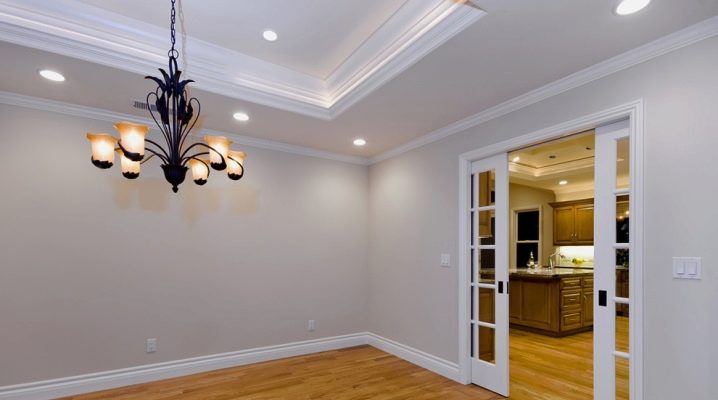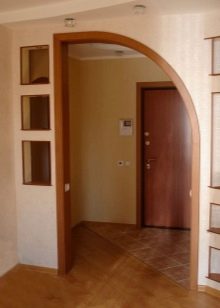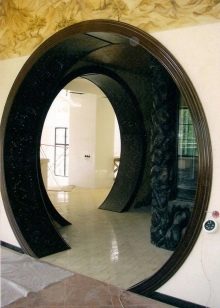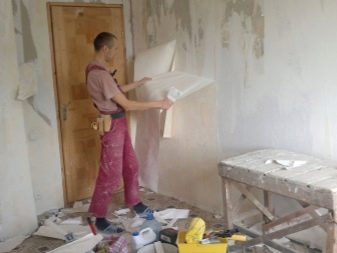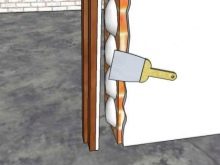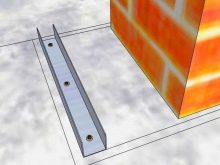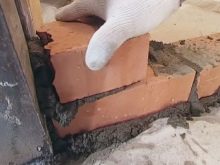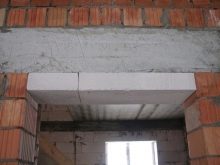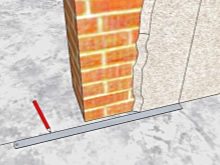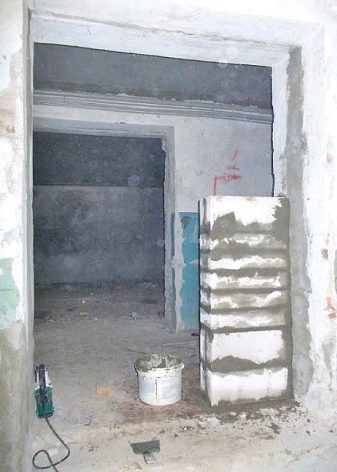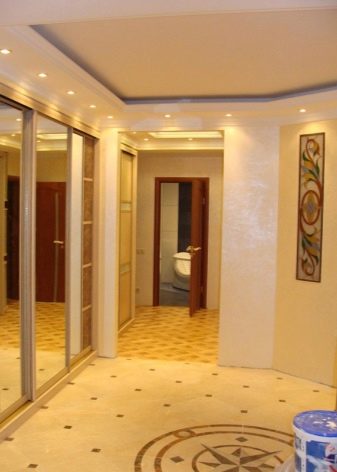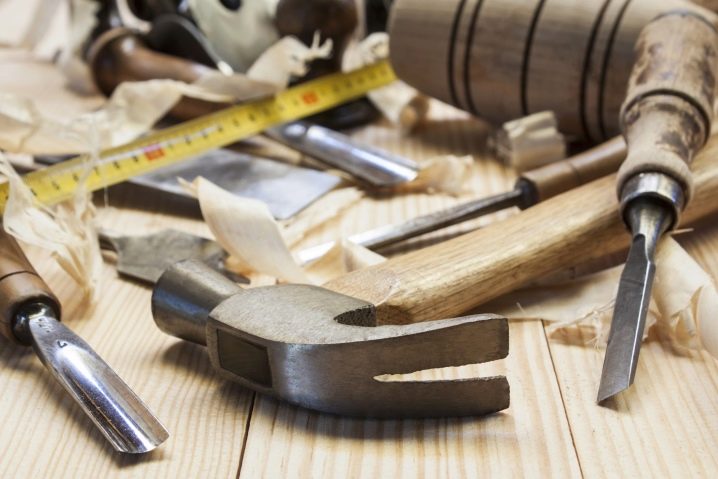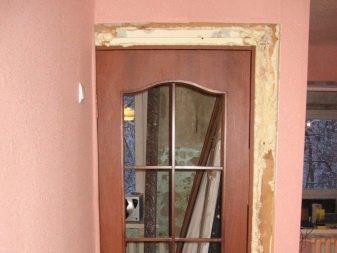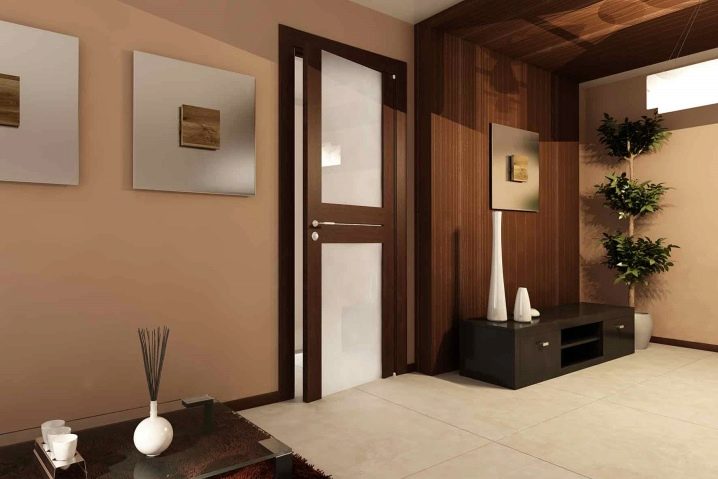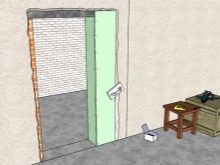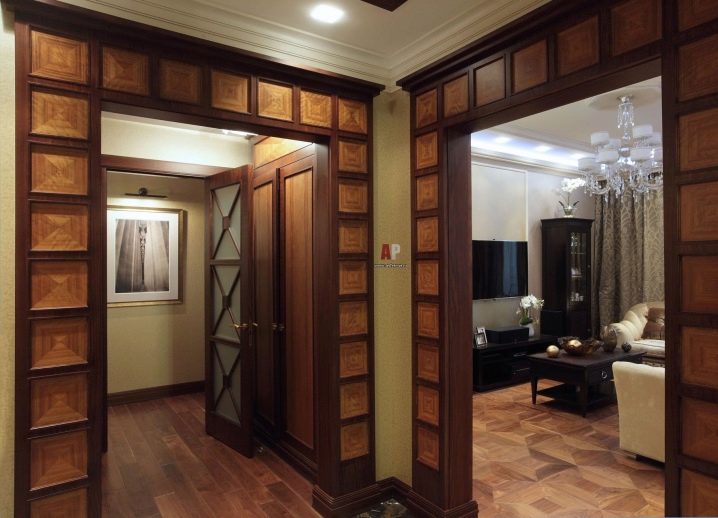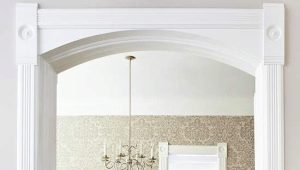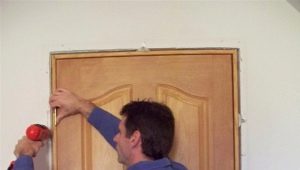Narrowing of the doorway
The task of narrowing the doorway has to be faced by those who started a major overhaul in their own home or when it is too large to install a standard interior door. In any case, the solution to this problem is completely feasible, even for those who are not particularly "friendly" with the repair, but want to do this work independently. It will require a tool, additional materials and some free time.
Types and forms
Overhaul involves redevelopment, but not always by this scary word is the transfer of walls. A slight redevelopment is the change in the width of the doorway. It can be narrowed down using three basic methods, which are described below. But before work you need to decide on the form of the future opening:
- Rectangular. Does not require large-scale work. All that is required is to narrow the opening and preserve its regular geometric shape;
- Semicircular. In another it is called the arch. To create an arched shape, it is necessary to narrow the opening in the upper part with the help of a metal structure or aerated concrete;
- Complex. Triangular or any other curly shape will require a skilled craftsman and lightweight materials like drywall. Usually it is created without a door and is an arch, so light materials will be suitable for its refining.
For installation in the subsequent door leaf, only a rectangular opening form will be suitable. If the opening is too wide or you want to put a standard door instead of an arch, you will have to change its dimensions.
Significantly or slightly - depends on the width.
Training
The first and one of the most important stages is the preparation of the doorway for change.
It consists of several points:
- Cleaning the doorway from the excess: the old door or arch, trim, box and other things. This step is necessary in the event that the work on changing the aperture will be carried out in the second-time purchased apartment or in our own, but no longer new. It is also necessary to clean the doorway in order to assess the condition of the walls.Sometimes it happens that the opening will have to be further expanded due to the dilapidation of the walls, and only after they are strengthened will they lay a new “foundation”.
- Reposition of electrical wiring and other communications, which the new opening could harm. If any of them is laid close to the doorway, then the line will have to shift.
- Evaluation of the “bare” opening on the strength of the walls and the choice of the method for reducing it. At this stage, the choice of material is also made.
The prepared opening must be clean, the brickwork of the wall or concrete must be visible. Before the contraction, you need to make a markup: put a metal rule on the floor close to each of the walls. It should rest on the plaster wall.
Next - draw a line from one wall to another and observe this proportion when creating a narrowing structure.
Operating procedure
There are several ways to reduce the opening, each of which is based on the selected material and the method of its attachment.
Brickwork
The strongest way to narrow aperture is to use bricks or blocks of concrete. It is suitable for strengthening walls for further installation of an interior or entrance door.For this, conventional bricks or aerated concrete blocks can be used.
The latter are distinguished by high density and simple cutting (unlike fragile bricks).
This will require the following tools and materials:
- Blocks or bricks across the width of the aperture in the amount that almost will block the "extra" part;
- 2 steel corners;
- Cement for masonry;
- Cladding material (chipboard, drywall);
- Fasteners;
- Drill or hammer drill;
- Construction grater;
- Screwdriver;
- Level;
- Ruler / tape measure;
- Pencil;
- The tool for cutting in case of cutting of the gas-block.
For the preparation of cement mortar will need a tank, a construction mixer, gloves.
The work is dirty, but the only true to create a reliable design.
Stages of work:
- Choose blocks / bricks suitable for the opening width or cut the aerated concrete according to the required parameters;
- Install metal corners into the wall grooves: they will become the frame for the blocks. It is important to choose reliable and durable corners, they will keep the entire concrete or brick construction;
- Secure the corners with screws, nails;
- Start laying bricks from the bottom.Fill the entire height of the opening with a brick will not work, but try to do it as much as possible;
- Use a construction grater to walk through the structure and remove excess cement;
- Let the masonry dry for 24 hours and then do the rest of the work;
- Plaster it with plasterboard or similar decorative material or just plaster.
Brick or aerated concrete must be laid on the mortar. The remaining space at the top must be filled with any suitable material - foam, wood filler, foam, depending on the size of the "gap". Another important point is the treatment of stone wall with antifungal and anti-mold composition. It is known that a brick can absorb water and is an excellent breeding ground for mold, fungi and other unpleasant phenomena. Therefore, you need to protect the wall from the devastating effects.
If you decide to plaster a new wall, you should know that the first layers of the brick will probably absorb it, and you will have to process the structure once more - with the same plaster or primer.
The main disadvantage of this method is the complexity, but the main plus is reliability. If there is a choice about what to choose - a brick or aerated concrete, choose the second.It is easy to work with aerated concrete or foam blocks - cut, saw, lay, drill.
This material is lighter than brick in weight, but in no way inferior to it in its quality characteristics.
Use of a bar
This method is one of the most simple and common. The whole point is to pick up the timber across the width of the opening and install it. It is important to determine the ideal width of the material, it will be much easier to adjust the height. Otherwise, when the timber is larger than the width of the aperture, you will have to “wedge” it and adjust it to the standards.
The work will require the following materials and tools:
- Timber, 20-30 mm smaller than the opening section;
- Long nails or screws for fixing the bar and short for decoration;
- Primer, decorative panels;
- Drill or hammer drill;
- Hammer or screwdriver;
- Plane;
- Level, measuring tape, pencil.
Once the workpiece is found, you need:
- Attach the timber to the doorway and assess how well it covers its part. If the thickness of the material slightly protrudes beyond the limits of the opening, you need to clean the edge with a plane or make it slightly smaller so that the decor is flush with the wall;
- Fix the workpiece fasteners without caps - they can interfere with further finishing the opening. If they are with caps, then you need to drive them right into the wood;
- To fix the bars, it is good to use a hammer that can be used to adjust the inclination of the bars;
- Next, cover the surface with a decorative panel. Attach them to small screws.
With such an overlap of the opening, it is worth considering the fact that this material does not have great strength. It will not work if in the future it is planned to install a heavy door made of solid wood, as it will simply not sustain it. This method is hardly suitable for a bathroom, as it can be deformed in the course of its “life”. Timber - wood that absorbs moisture well, can swell or crack.
A little advice from experienced installers: use mounting foam to seal gaps. It will further strengthen the structure and make it airtight. The moisture does not penetrate into the high-quality foamed blank.
If the design is subject to wallpapering or painting, then it must be properly primed.
Using drywall
This method is also popular due to its low cost, material availability and purity. Drywall does not have the proper strength, and therefore can be used to narrow the opening of no more than 10 cm. The essence of this method is to create a metal frame and covering it with a hyposcreen.
The work stages are as follows:
- Draw a diagram of the future frame and its fastening with an indication of the size (metal profile, suspensions);
- From the metal profile, cut the details of the future frame, equal to the height and width of the opening;
- Make holes in the upper part of the aperture - suspensions on which the future construction will hold. Make suspensions about 15 cm wide apart, not more often;
- Assemble the metal case and fasten it;
- Plasterboard drywall. Using a screwdriver will significantly reduce installation time;
- To eliminate irregularities, bayonets, use a putty;
- The last step - the treatment of the entire surface of the soil.
This method of narrowing the opening - not the most durable.
It is usually used to adjust the width to beautify the opening without a door with an arch. To increase the strength of the structure, you can fill it from the inside with polystyrene foam bars.
It is possible to reduce the opening using ordinary plaster, if you plan to do it slightly. The essence of this method is the use of a mixture based on cement. It is applied in several layers in order to narrow the width by 2-5 cm.
You will learn more about how to narrow the doorway in the following video.
